1. Principles and practices¶
This week I worked on defining my final project idea and started to sketch my plans on how to execute it.
Planning my Final Project¶
I had many initial ideas on what my final project for Fab Academy was going to be. My first idea was something to do with an LED Display that would paint pictures that the user could draw and edit, although I left like this was a very basic and easy project, so I decided to do some research and use inspiration from past Fab Academy projects. Two summers ago in 2020, the whole world had gone on lockdown, and all travel was not allowed. During that quarantine period, I remember being bored and search projects I can do at home. I stumbled across the Magic Mirror idea, which I thought was very cool. When I was young, my dad always encouraged me to make cool DIY projects in hopes of getting me interested in engineering. As you can tell, this worked because I wouldn’t be where I am today, without this encouragement. I researched a lot, and made many plans, although this project never went forward as I did not have the materials or the knowledge to complete this project. A part of me now is glad that I did not do this project during the summer of 2020 because it would have been very lame, as I planned on using an Ikea frame as the frame for my mirror. Although, with the knowledge of prior engineering classes and the course of Fab Academy, I am beyond excited to see how I can take this project to the next level. I am thrilled to build many new and cool features to this mirror, which will inspire others in the future!
After settling on what I would like to do for my final project, I started to finalize the process on how to make the Magic Mirror.
What is the Magic Mirror?¶
The Magic Mirror is a smart mirror that has AI and displays (on the mirror) the weather, time, latest news, text messages, compliments, etc. You can talk to the mirror, and the mirror will respond, as well as display the correct information you asked for. This is essentially like an Alexa. The mirror will be voice-activated using NLU (natural language understanding), which is built off the popular wit.ai engine. I found a tutorial called How to make a Raspberry Pi Smart Mirror I plan to use this tutorial to build and code my final project. The main Git Repository I will be using is GitHub- Hacker Shack Official.
Here is the inpriration for my project:
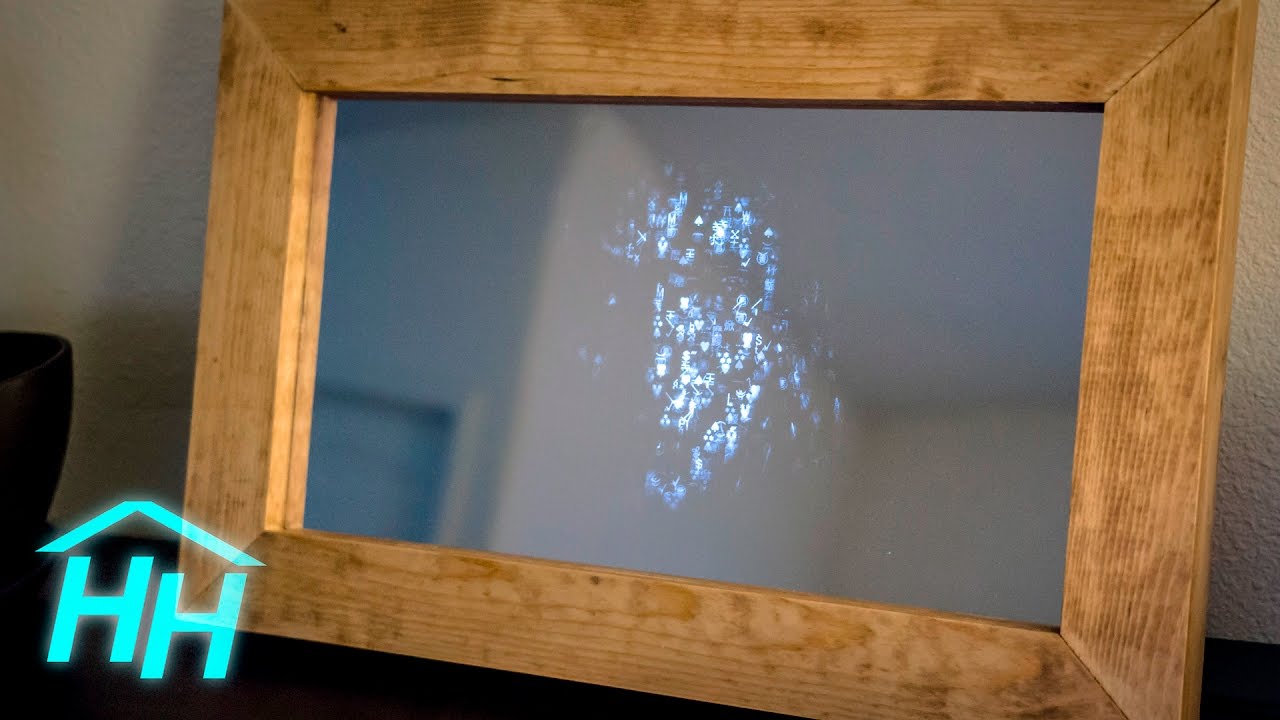
To easily manage this project, I have broken it up into 3 parts:
Part 1- Build the mirror
Part 2- Load Code
Part 3- AI
Materials¶
I made an Excel file of all the materials that I will be needing for this project:
I have organized them in different columns, such as the name, quantity, process, and price.
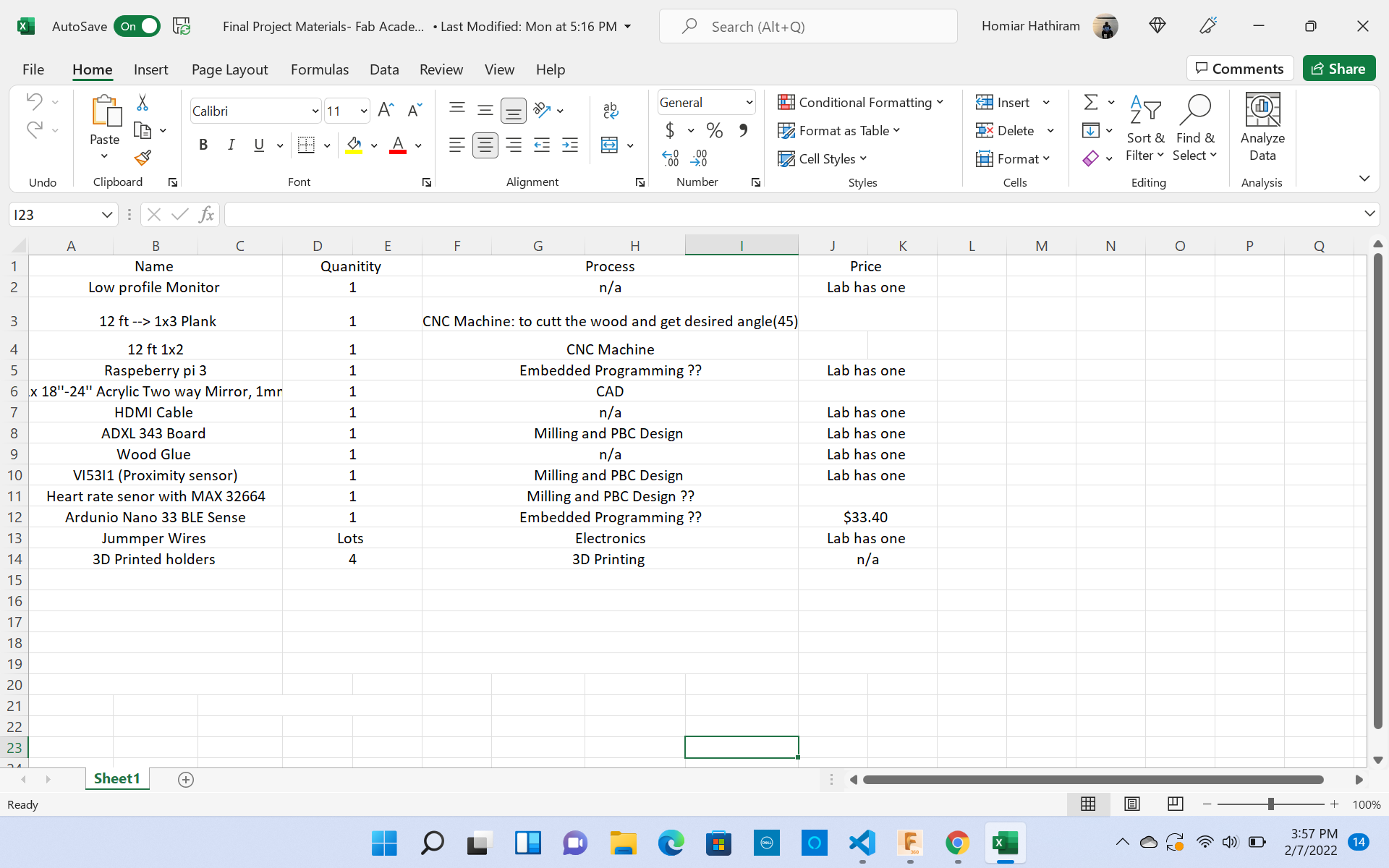
Sketching and Planning¶
I first sat down and drew my project design with pencil and paper. I referred to many videos and links and came up with a contingent plan, which I would later draw on Notability.

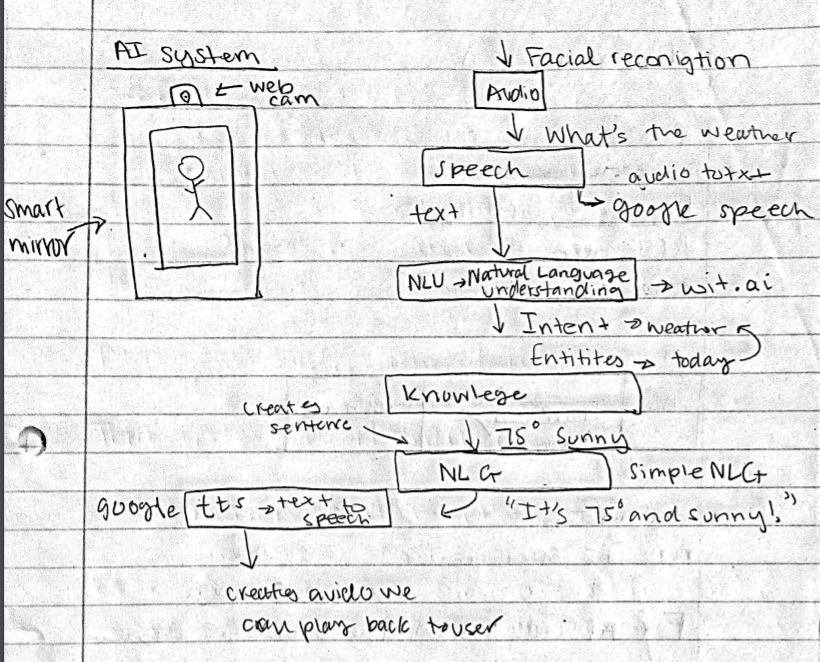

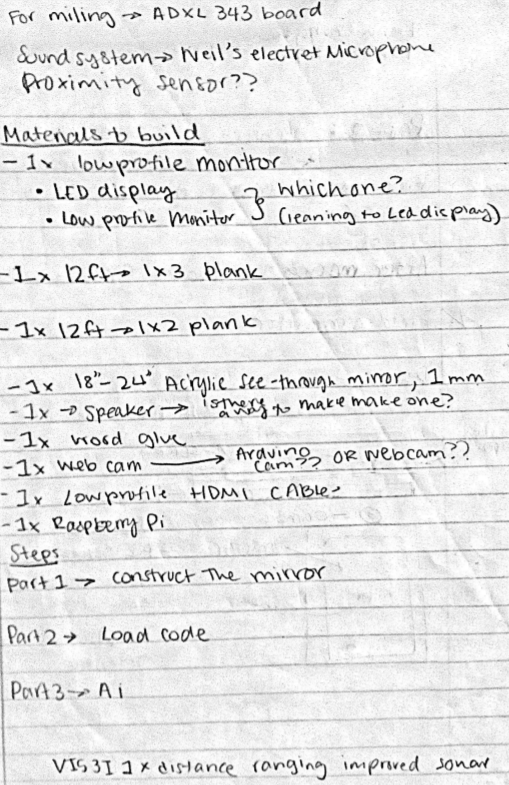

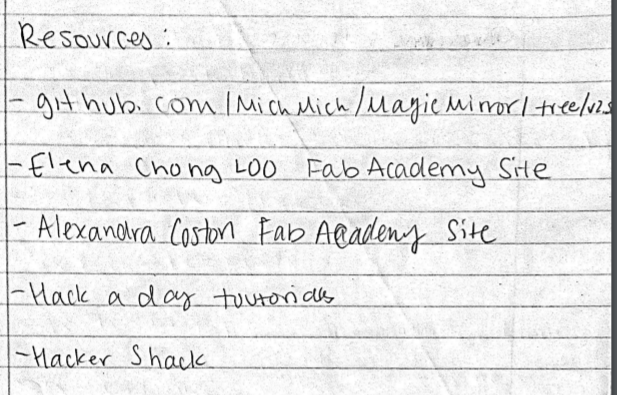
Resource Links¶
- Mich Mich Magic Mirror Git Hub
- Elena Chong Loo’s Fab Academy Website
- Alexandra Coston
- Hackaday Tutorials
- Hacker Shack
After sketching the plans out on paper, I shifted platforms to Notability. This is an app on my school Ipad, which allows users to take detailed notes and draw diagrams using different colors and tools to make it look presentable. This app is a great app to take notes, and I thought it was perfect for outlining my project as well.
Notability Design¶
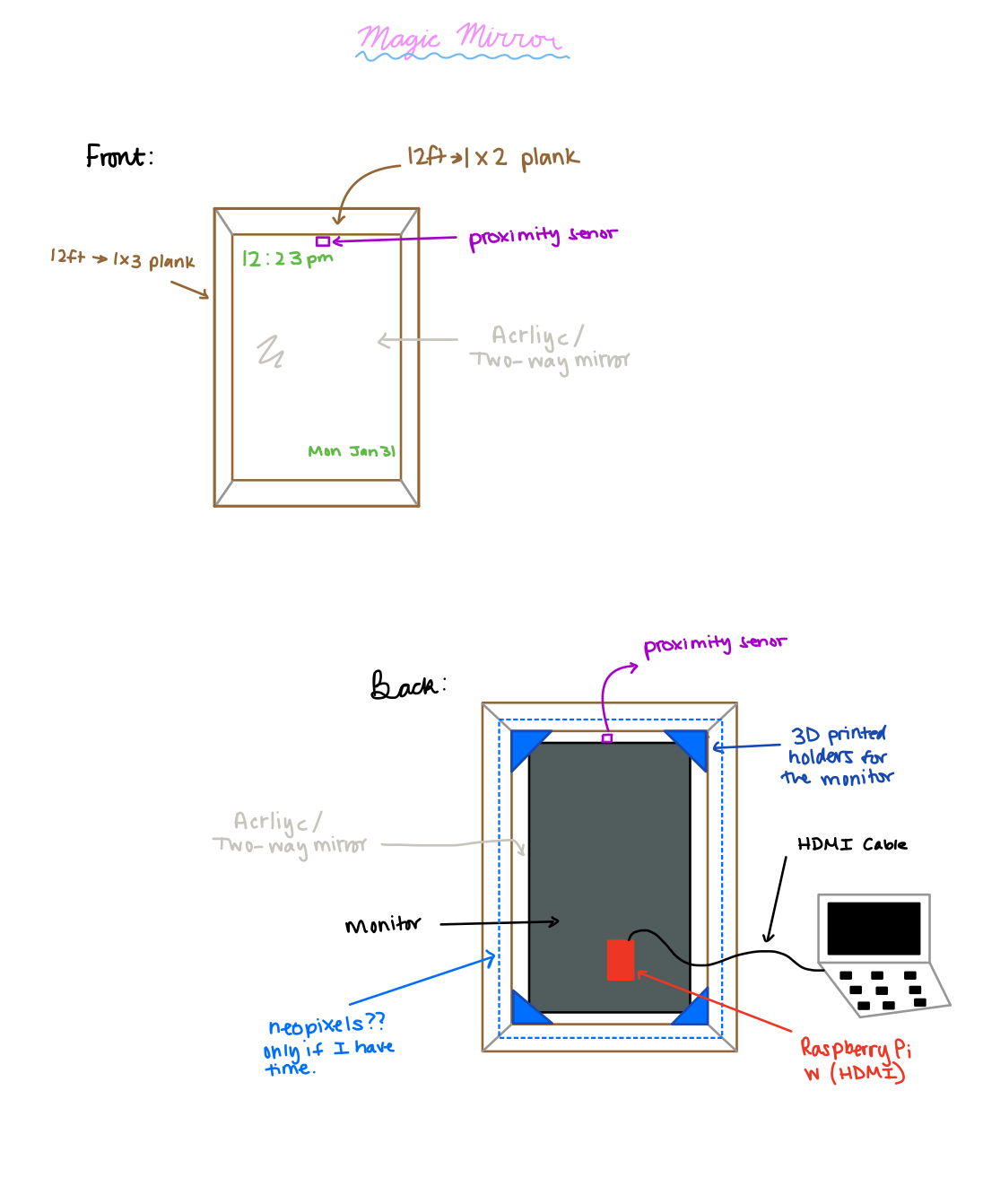
After speaking to Dr. Fagan, he recommended that I make the frame of my mirror more interesting instead of a traditional rectangle frame. This was an amazing idea although, I am still unsure how the CNC will cut these curves. Dr. Fagan assured me that later throughout the weeks in Fab Academy, I will be able to broaden my horizons. Making curves to the mirror will add a funky feature to my project which I am excited to see how it will turn out.
Updated Notability Sketch¶
Listening to Dr. Fagan’s advice on redesigning the frame of my mirror, I started to research designs that I find fascinating and started listing and drawing them into the Notability sketch. I found inspiration from Pinterest, Google Images, and Restoration Hardware. I chose most of the designs from each of these sites.
Last weekend was my brother’s birthday and we went to dine at Restoration Hardware, which is a furniture shop as well as a restaurant. After dinner, I decided to go see the mirror section to get some ideas. Some of these mirrors were humongous, and some were vanity mirrors. I saw many different frame shapes and based 2 of my drawings on them.
Pinterest is one website where you can find any idea and make it come to life. It is one of my favorite websites and will be throughout Fab Academy!
Mirror Frame Inspirations Found Online¶
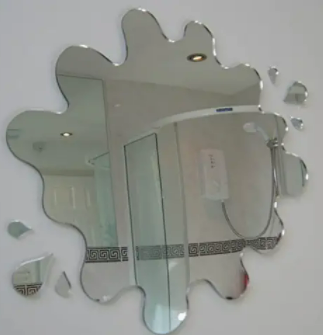
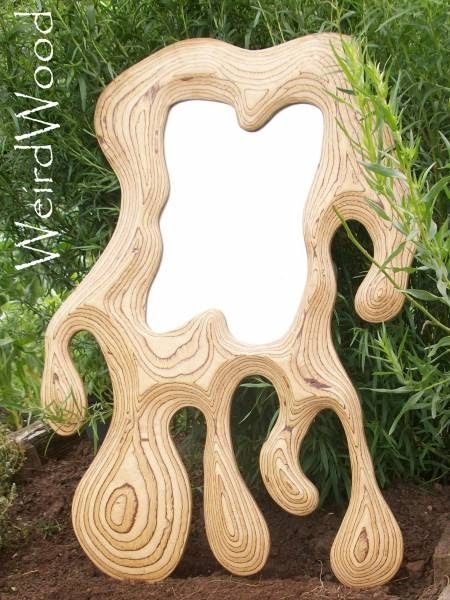
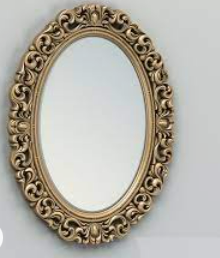
By using these references I drew my own mirror frames on Notability.
Notability Sketch¶

Summary¶
This week I learned what expectations I have to achieve as well as, to manage my time efficiently. Time management is a very important aspect of this course as I cannot spend too little time because it will result in a bad job, and I cannot spend too much time because then I cannot finish my school work. I have done a very good job balancing this and am proud of the progress I have made so far. Throughout this process, I also learned that I should be thinking outside the box in every aspect. For example, the outer frame design, which was recommended by Dr. Fagan. I also came to learn that the planning process of my Magic Mirror, doesn’t have to be ‘perfect’ the first time. This plan should be contingent and can change anytime due to parameters or other external forces. Making things look ‘perfect’ is something I strive for, although am slowly learning that time is precious and instead of aesthetically making something look nice, I should allocate my time to document or work on the weeks ahead.